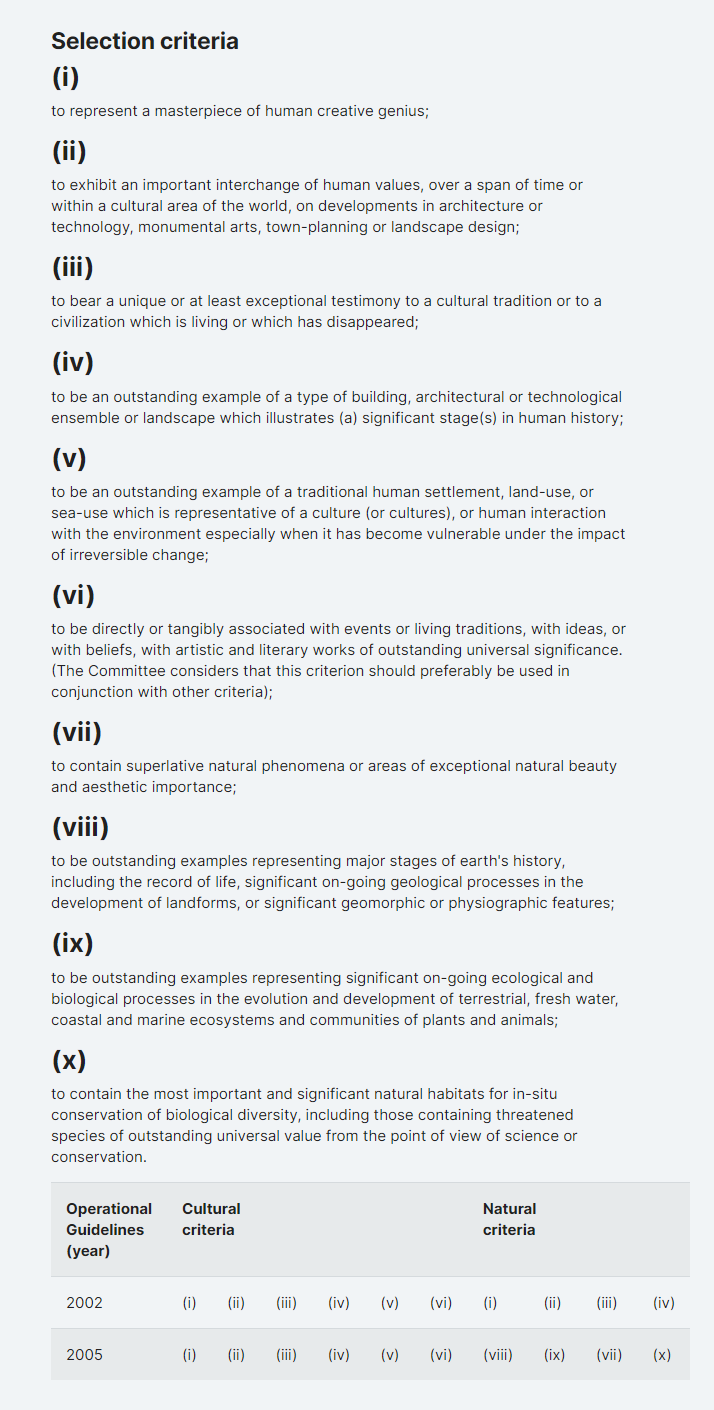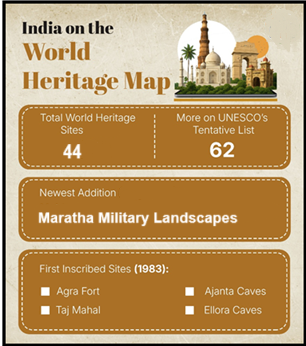Maharashtra
Maratha Military Landscapes Added to UNESCO World Heritage List
- 15 Jul 2025
- 5 min read
Why in News?
At the 47th Session of the World Heritage Committee, India’s official nomination for the 2024–25 cycle, ‘Maratha Military Landscapes of India,’ was inscribed on the UNESCO World Heritage List, making it India’s 44th World Heritage Site.
- It followed the 2024 inscription of the Moidams of Charaideo, Assam.
Key Points
About Maratha Military Landscape
- About: The Maratha Military Landscapes of India include 12 major forts, mostly in Maharashtra and one in Tamil Nadu, built or expanded between the late 17th and early 19th centuries.
- Strategically located in coastal and hilly areas, the forts formed a strong defence system that supported Maratha military power, trade, and territorial control.
- 12 Major Forts:
- Maharashtra: Salher, Shivneri, Lohgad, Khanderi, Raigad, Rajgad, Pratapgad, Suvarnadurg, Panhala, Vijaydurg, Sindhudurg
- Tamil Nadu: Gingee Fort
- Classification by Terrain:
- Hill Forts: Salher, Shivneri, Lohgad, Raigad, Rajgad, Gingee.
- Hill-Forest Fort: Pratapgad.
- Hill-Plateau Fort: Panhala.
- Coastal Fort: Vijaydurg.
- Island Forts: Khanderi, Suvarnadurg, Sindhudurg.
- Protection: 8 forts (Shivneri, Lohgad, Raigad, Suvarnadurg, Panhala, Vijaydurg, Sindhudurg, and Gingee) are protected by the Archaeological Survey of India (ASI).
- 4 forts (Salher, Rajgad, Khanderi, and Pratapgarh) are under the Directorate of Archaeology and Museums, Government of Maharashtra.
- World Heritage Site Recognition: The Maratha Military Landscape was nominated under UNESCO criteria (iv) and (vi) for its architectural, technological, and cultural significance, as well as its links to historic events.
- Such inscriptions aim to protect and promote heritage with Outstanding Universal Value (OUV) across 196 countries.
About UNESCO World Heritage Selection Criteria
- Criteria for Selection: To be listed as a UNESCO World Heritage Site, a place must have OUV and meet at least one of the ten selection criteria. These are outlined in the Operational Guidelines, which serve as the main reference for implementing the World Heritage Convention.
- Originally, there were six cultural and four natural criteria, but since 2005, a single unified set of ten criteria is used. The guidelines are updated regularly to reflect changes in how heritage is understood and protected.
- After selecting a site from the Tentative List, the State submits a detailed nomination file. The World Heritage Centre reviews it before sending it for evaluation.
- Evaluation: A nominated property is independently evaluated by Advisory Bodies mandated by the World Heritage Convention: ICOMOS (International Council on Monuments and Sites), IUCN (International Union for Conservation of Nature).
- ICCROM (International Centre for the Study of the Preservation and Restoration of Cultural Property), an intergovernmental organization that provides the Committee with expert advice on cultural site conservation and training activities.
- Inscription: After evaluation, the World Heritage Committee meets annually to decide on site inscriptions. It may also defer decisions and seek more information from States Parties.
- India became a member of the World Heritage Committee from 2021-25.
Note: UNESCO, through the 1972 World Heritage Convention, helps countries identify and protect cultural and natural heritage sites. India joined the Convention in 1977 (a total of 196 countries have ratified the 1972 World Heritage Convention).
- Every year, each State Party may propose just one site for consideration of the World Heritage Committee for inscription to the World Heritage List.
- India ranks 6th globally and 2nd in the Asia-Pacific for the highest number of World Heritage Sites. With 62 sites on its Tentative List of the World Heritage, which is a mandatory threshold for any site to be considered as a World Heritage property in the future.









